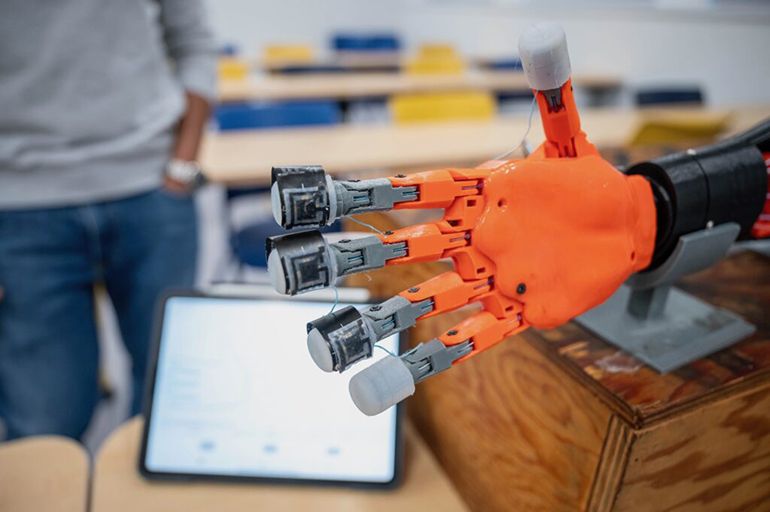Summary:
Engineers from the University of British Columbia and Honda have collaborated to develop an innovative e-skin for robotic prostheses, enhancing their ability to sense and interact with the environment.
This soft and highly sensitive skin enables robotic hands to perform intricate tasks requiring dexterity and tactile feedback, such as holding an egg or lifting a glass without breaking it. The elastomer skin mimics real skin with fixed and sliding pillars, allowing it to buckle and wrinkle. It incorporates four deformable capacitators to distinguish between normal and shear forces, providing precise control when interacting with objects. The researchers anticipate that this technology will advance robotic prostheses, enabling users to expand their range of daily activities.
The significance of evolving sensors for robotic prostheses is emphasized, particularly in tasks requiring delicate object manipulation. The e-skin’s high sensitivity broadens the spectrum of possible activities, allowing prosthetic or robotic arms to respond with dexterity and precision to tactile stimuli. The sensor’s capacity to detect various forces makes it suitable for holding fragile items without causing damage.
The potential applications extend beyond robotic prostheses, including medical or assistive robots for elderly care and surgical robots interacting with soft tissues. The e-skin utilizes weak electric fields to sense objects at a distance, similar to touchscreens but with added suppleness and force detection capabilities. The researchers highlight the ease of fabricating the skin at scale, covering significant areas.
While the current technology is a significant step forward, the researchers acknowledge the need for further evolution. They emphasize the complexity of human skin, which has a hundred times more sensing points on a fingertip, and highlight the importance of advancements in sensors and artificial intelligence working together. As sensors become more skin-like, capable of detecting temperature and damage, robots will need to intelligently prioritize and respond to relevant sensory information. The collaboration between sensor development and artificial intelligence is crucial for the continued improvement of robotic technologies.
Article written by CONN HASTINGS
20/11/2023
Source:
Medgadget
https://www.medgadget.com/2023/11/stretchable-e-skin-for-robotic-prostheses.html

